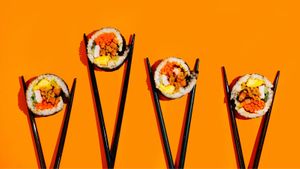A staple snack, no matter where you are, chowmein has been ruling our hearts for decades now. Packing a punch of flavours, and textures chowmein is eaten all over the world, and while the chowmein recipe is Cantonese, originally coming from China, it has been adapted to incorporate local flavours and ingredients which have made chow mein a favourite everywhere. As Chinese immigrants moved to different places across the globe, they brought with them their beloved chowmein recipe, and given the ease of making the dish and the variety in chowmein ingredients, people started making them locally as well.
The beloved dish also looks different wherever you go in the world. While Hong Kong serves a crispy chow mein, sometimes even incorporating fried noodles, the chowmein recipe you’ll find in Guangdong is saucy and has soft noodles. This makes chow mein ingredients list easy to alter according to your preference, as long as it retains the basic idea of a chowmein recipe. In India, chow mein was made popular by the Chinese settlers in Kolkata. The Indian version is quite an easy recipe for chowmein, and whether you are a vegetarian or a non-vegetarian, this scrumptious snack is sure to delight you.
Chowmein ingredients list

Depending on whether you are making a vegetarian or a non-vegetarian version, chowmein recipe can vary. The basics remain the same. You need noodles for the base, vegetables, a protein item of your choice, aromatics, and sauces.
Here are chowmein ingredients you need to make a great meal:
- Noodles of your choice (wheat/egg-based)
- Chopped cabbage
- Julienned carrots
- Sliced onions
- Protein of your choice (Tofu/Paneer/Egg/Chicken)
- Ginger garlic paste
- Soya sauce
- Green chilli sauce
- Vinegar
- Oyster sauce (optional)
- Bean sprouts (optional)
- Salt as per taste
- Oil for stir-frying
Easy recipe for chowmein

- Start with boiling the noodles and keeping them aside. You can also run the noodles under cold water if you want to make sure they don’t stick to each other. Putting them under running cold water stops the cooking process and retains the texture of the noodles.
- In a wok, add some oil of your choice and let it heat. Once heated, add the aromatics to the oil, and let it cook till the raw ginger smell goes away. If you want, you can keep the flame on low while the aromatics cook so that while the rawness goes away, they also don’t overcook.
- If you are going to have protein in your chowmein recipe, this is where you add it. For chicken, make sure the pieces are evenly cut so that they cook better. For egg, add it to the wok, and scramble it for a texture like no other. For paneer and tofu, make sure you don’t overcook them.
- Once your protein of choice is cooked, add the chopped vegetables. Turn the flame on the highest to cook the vegetables while retaining the textures. The best way to retain the textures of chow mein ingredients is to make sure that they are cooked quickly, and on high heat. If they are cooked for a longer time on low heat, they’ll turn mushy.
- Add your noodles to their chowmein mix, and mix well. Once all solid chow mein ingredients have mixed properly, add your sauces, and stir enough so everything is well coated. To save time and not keep the mix cooking for too long, you can also mix all the sauces in a dish instead of keeping them separate and pouring from their respective bottles.
- Serve hot, garnished with chopped green onion.
Dishes like chowmein

Apart from chowmein which is everyone’s all-time favourite, if you like noodles and want to explore other dishes like this, we suggest trying lo mein. While chowmein has thin noodles, lo mein has thick chewy noodles, the cooking directions and ingredients for it are very similar to chowmein ingredients.
Photo: Shutterstock




